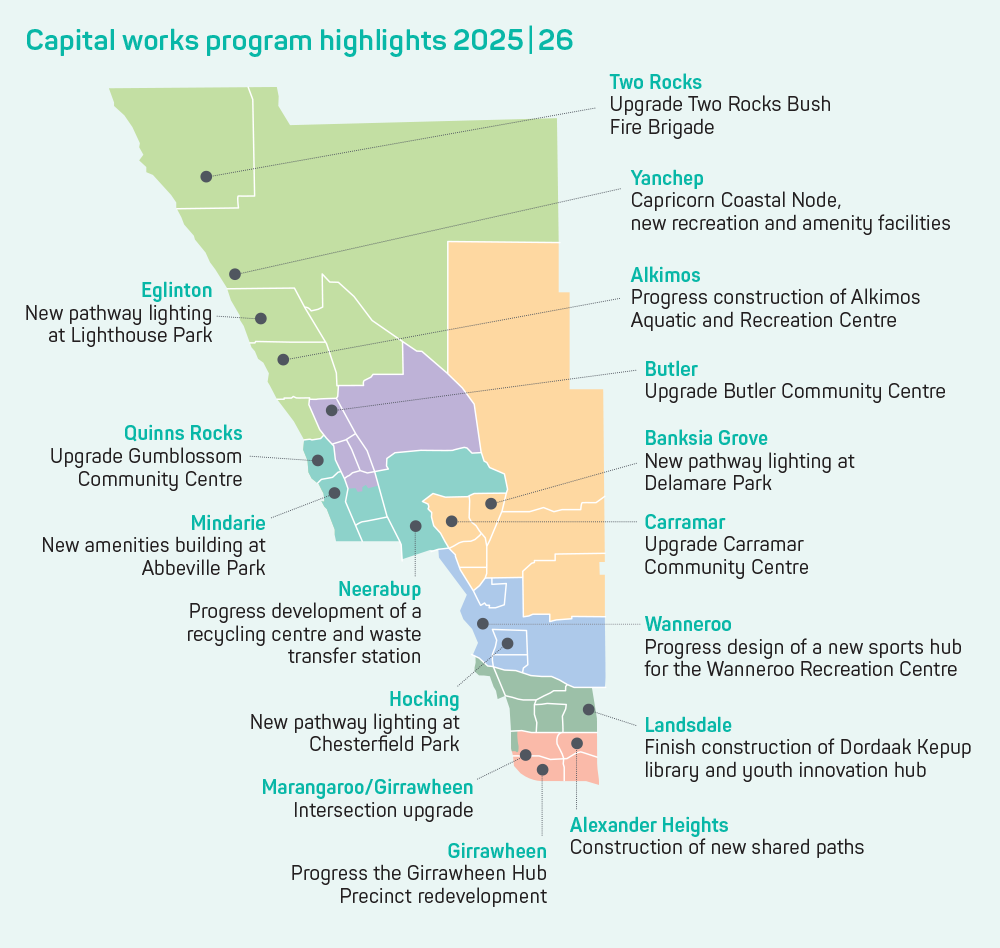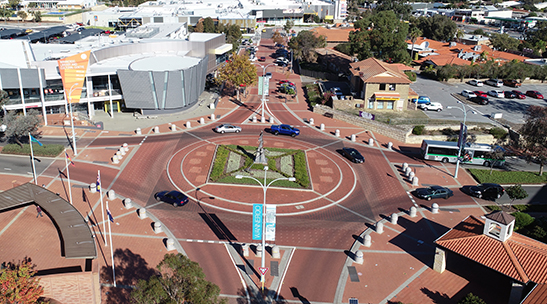Budget 2025/26
Budget overview
The City of Wanneroo’s 2025/26 budget will be invested in a range of services and facilities to keep our community connected, safe and sustainable.
It prioritises essential services and infrastructure projects while keeping rates as low as possible.
The budget pays for everyday community services and facilities we all use and supports a growing community that will be home to more than 393,000 people by 2041.
Rates help pay for new facilities, safe and efficient roads, vibrant and accessible parks and playgrounds, responsibly managed waste, community safety, and much more.
Operational expenditure
The below figures have been drawn from the City's 2025/26 operational expenditure budget. Numbers have been rounded for accessibility.
- Local roads and street lighting - $16.7m
- Waste services - $36m
- Governance - $17.5m
- Environment and sustainability - $49.2m
- Libraries, arts and culture - $8.7m
- Community recreation and facilities - $20m
- Economic development, advocacy and tourism - $1.6m
- Customer and information services - $40.3m
- Community development - $8.6m
- Planning and approval services, and public health - $13.5m
- Community safety and emergency management - $8.1m

Frequently asked questions (FAQs)
When was the 2025/26 budget adopted?
Wanneroo Council adopted the 2025/26 budget at the Ordinary Council Meeting on 22 July 2025.
How does the City calculate its annual budget?
Our annual budget is calculated based on available funding sources for the financial year ahead, including:
- Grants
- Reserves
- Fees and charges
- Interest revenue
- Loans
- State and federal government funding
- Rates
We always aim to keep rate increases to a minimum, but as costs to keep the City running rise, modest rate increases are needed to support the growth and maintenance of our large City and keep services and facilities we all use every day running.
This year, Council adopted a 3.5 per cent rate increase across all rating categories, and a 3 per cent increase for residential ratepayers, which amounts to less than $1 per week for most homeowners.
By establishing robust partnerships across all levels of government and diversifying revenue through alternative streams, the City expects that half of the 2025–26 budget will be funded from non-residential rates.
How does the City decide how to use the budget?
From major infrastructure projects to keeping our neighbourhoods clean, green and tidy, our budget provides free facilities and services we all use every day.
Council is guided by a number of strategy documents such as the Strategic Community Plan, developed in collaboration with residents, community groups and local business, to ensure City expenditure is aligned with community priorities.
It also includes funding to support the success of our local sporting clubs, community groups, not-for-profit service providers and local businesses.
In developing our annual budget, we first review our operating costs, taking into account any external cost increases. For example, the State Government tariffs.
Some projects have to be undertaken to make sure we can meet our community’s needs and maintain a safe City for our residents and visitors, and we allocate funds for these essential services first.
We then review how we can implement efficiencies to help lower costs for other services and programs, such as reducing the frequency of mowing our parks in summer.

